I have a MySQL database that I want to daily backup to my Dropbox folder on my Windows PC.
How can I do that automatically from Windows 7?
I have a MySQL database that I want to daily backup to my Dropbox folder on my Windows PC.
How can I do that automatically from Windows 7?
One of the simplest ways to backup a mysql database is by creating a dump file. And that is what mysqldump is for. Please read the documentation for mysqldump.
In its simplest syntax, you can create a dump with the following command:
mysqldump [connection parameters] database_name > dump_file.sql
where the [connection parameters] are those you need to connect your local client to the MySQL server where the database resides.
mysqldump will create a dump file: a plain text file which contains the SQL instructions needed to create and populate the tables of a database. The > character will redirect the output of mysqldump to a file (in this example, dump_file.sql). You can, of course, compress this file to make it more easy to handle.
You can move that file wherever you want.
To restore a dump file:
restore) in the destination server
mysql [connection parameters] restore < dump_file.sql
There are, of course, some other "switches" you can use with mysqldump. I frequently use these:
-d: this wil tell mysqldump to create an "empty" backup: the tables and views will be exported, but without data (useful if all you want is a database "template")-R: include the stored routines (procedures and functions) in the dump file--delayed-insert: uses insert delayed instead of insert for populating tables--disable-keys: Encloses the insert statements for each table between alter table ... disable keys and alter table ... enable keys; this can make inserts fasterYou can include the mysqldump command and any other compression and copy / move command in a batch file.
My solution to extract a backup and push it onto Dropbox is as below.
A sample of Ubuntu batch file can be downloaded here.
backup.shbackup.sh to create a backup version e.g. backup.sqlbackup.sql to Dropbox folderbackup.sh task e.g. every day at nightBack up to compressed file
mysqldump -u [uname] -p [dbname] | gzip -9 > [backupfile.sql.gz]
plink.exe -ssh -pw -i "Path\to\private-key\key.ppk" -noagent username@server-ip
Create a app https://www2.dropbox.com/developers/apps
Add an app and choose
Dropbox API App. Note the createdapp keyandapp secretInstall Dropbox API in Ubuntu; use app key and app secret above
$ wget https://raw.github.com/andreafabrizi/Dropbox-Uploader/master/dropbox_uploader.sh $ chmod +x dropbox_uploader.shFollow the instruction to authorize access for the app e.g.
http://www2.dropbox.com/1/oauth/authorize?oauth_token=XXXXXXXTest the app if it is working right - should be ok
$ ./dropbox_uploader.sh infoThe app is created and a folder associating with it is
YourDropbox\Apps\<app name>Commands to use
List files
$ ./dropbox_uploader.sh listUpload file
$ ./dropbox_uploader.sh upload <filename> <dropbox location> e.g. $ ./dropbox_uploader.sh upload backup.sql .This will store file
backup.sqltoYourDropbox\Apps\<app name>\backup.sqlDone
crontabCall command
sudo crontab -eInsert a line to run backup.sh script everyday as below
0 0 * * * /home/userName/pathTo/backup.shExplaination:
minute (0-59), hour (0-23, 0 = midnight), day (1-31), month (1-12), weekday (0-6, 0 = Sunday), commandOr simply we can use
@daily /home/userName/pathTo/backup.sh
Note:
